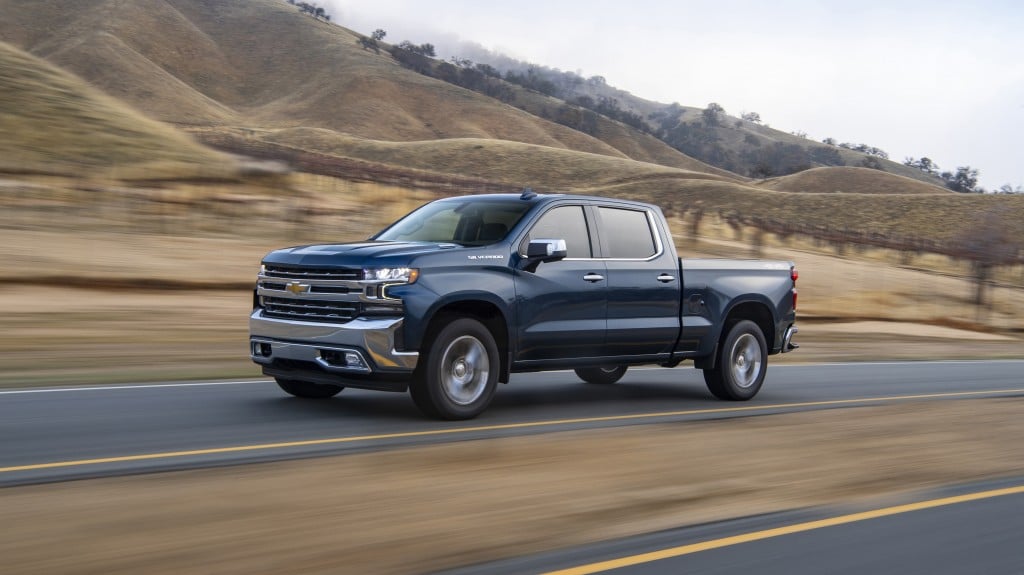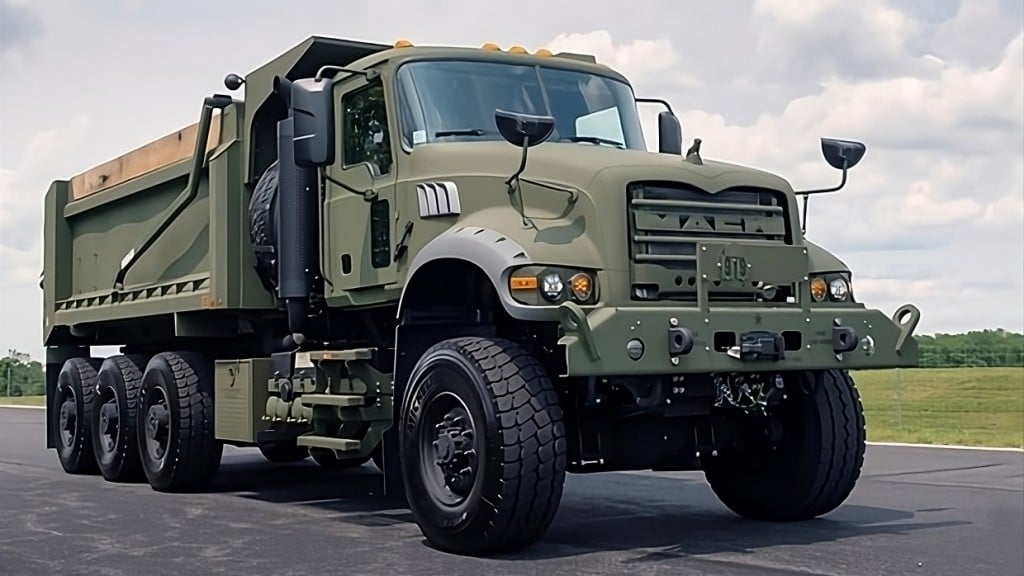Chevrolet equips 2020 Silverado with new, advanced 3.0L Duramax diesel
No-compromise engine delivers refinement, performance and efficiency

The all-new 2020 Chevrolet Silverado's available 3.0L Duramax inline-six turbo-diesel engine adds choice and versatility for full-size truck customers, offering torque and horsepower in addition to focusing on fuel economy and capability. It is the first-ever inline-six turbo-diesel offered in Chevrolet's full-size light-duty trucks.
Chevrolet engineers started with a clean-sheet design and developed an all-new engine that leverages the efficiency and refinement advantages of the inline six-cylinder architecture and incorporates advanced combustion and emissions technologies to optimize performance and efficiency.
"From the moment the engine is started, to its idle, acceleration and highway cruising, the 3.0L Duramax performance will change perceptions of what a diesel engine can offer in refinement," said Nicola Menarini, director for Diesel Truck Engine Program Execution. "With advanced technologies that draw on global diesel expertise, it's a no-compromise choice for those who want the capability and driving range of a diesel in a light-duty truck."
Available on LT, RST, LTZ and High Country models, the 3.0L Duramax diesel rounds out the new Silverado's range of six propulsion choices, each tailored to suit customers' needs for performance, efficiency, technology and value. It is rated at an SAE-certified 206.56 kilowatts (277 horsepower) and 624 Nm (460 lb-ft) of torque delivering 95 percent of peak torque at just 1,250 rpm. Peak torque is sustained from 1,500 rpm through 3,000 rpm, providing a powerfully smooth and satisfying driving experience.
The 3.0L Duramax is paired with GM's 10L80 10-speed automatic transmission, featuring a centrifugal pendulum absorber torque converter that reduces vibrations to improve smoothness, reinforcing its performance, efficiency and refinement. This combination also offers exhaust braking, which uses the diesel engine's compression to help slow the vehicle, requiring fewer brake applications by the driver when in Tow Haul mode.
Innovative Engine Technologies
The inline six-cylinder architecture offers inherent efficiency and refinement, but the team expanded with smart technology choices to help improve efficiency and weight while optimizing the truck experience. A lightweight aluminum block and cylinder head reduce overall mass, and Active Thermal Management enhances efficiency and cold-weather warm-up. Ceramic glow plugs also help with shorter heat-up times and a quicker cold start, meaning the engine block heater is not needed until -30 degrees C (-22 degrees F).
Towing is an important part of owning a truck, and customers can gain additional confidence thanks to the exhaust brake available in tow-haul mode. The water charge air cooler, coupled with low pressure EGR, reduces time to torque. The variable geometry turbocharger helps provide a greater balance of performance and efficiency, and an electronically variable intake manifold helps optimize performance across the rpm band.
All-aluminum construction and tough rotating assembly
The 3.0L Duramax cylinder block is made of a cast aluminum alloy that provides the strength required to support the high combustion pressures that occur within a diesel engine, while also offering an approximately 25 per cent mass savings over a comparable cast iron engine block. Iron cylinder liners are used within the aluminum block to insure truck durability.
There are seven nodular iron main bearing caps that help ensure the block's strength under those high combustion pressures, while also enabling accurate location of the rotating assembly. A deep-skirt block design, where the block casting extends below the crankshaft centerline, also contributes to the engine's stiffness and refinement. It's complemented by a stiffness-enhancing aluminum lower crankcase extension attached to the main bearing caps.
The rotating assembly consists of a forged steel crankshaft, forged steel connecting rods and hypereutectic aluminum pistons. The alloys in the respective castings for the rods and pistons make them lightweight and durable. Silicon is blended with the aluminum for heat resistance and tolerance within the piston cylinders, which enhances performance and makes the engine quiet.
A thick piston crown — the top of the piston — and reinforced top ring add strength to support the tremendous cylinder pressures enabled by turbocharging and the engine's high 15.0:1 compression ratio.
Additional Technology Highlights
Variable geometry turbocharging enables the Duramax 3.0L engine to deliver class-leading horsepower with minimal effect on overall efficiency. The system uses closed loop controlled vanes position and sophisticated electronic controls to automatically adjust boost pressure to the desired value based on engine running conditions and instantaneous power demand. The liquid-cooled turbocharger features a low-friction ball-bearing shaft and is mounted close to the exhaust outlet of the engine for quicker spool-up of the turbine and quicker light-off of the exhaust catalyst. A water-to-air intercooling system produces a cooler higher density air charge for greater power. Maximum boost pressure is 300 Kpa (43,5 psi) absolute.
Low-pressure EGR: The Duramax 3.0L utilizes new low-pressure Exhaust Gas Recirculation to optimize performance and efficiency. The EGR system diverts some of the engine-out exhaust gas and mixes it back into the fresh intake air stream, which is drawn into the cylinder head for combustion. That lowers combustion temperatures and rates.
Traditionally, EGR systems in diesel applications recirculate exhaust gases between the two high-pressure points, the exhaust manifold(s) and intake manifold. However, it generally requires efficiency-robbing assistance from the turbocharger or other supporting elements to achieve the pressure differential required for sufficient EGR flow rates.
The new low-pressure system adds to the high-pressure system, supporting continual adjustment of exhaust backpressure for more efficient operation. It recirculates gases between the low-pressure points in the exhaust system (downstream of the particulate filter) and after the compressor inlet.
When the low-pressure EGR is activated by an electronically controlled valve, the engine burns exhaust gas that has already passed through the particulate filter. That increases the turbocharger's efficiency, which helps overall vehicle efficiency without deteriorating the rate of particulate matter emitted by the engine.
A variable intake manifold offers dual air intake pathways for each cylinder. Electronically controlled flaps — one for each cylinder — shorten or lengthen the airflow to each cylinder. This optimizes the airflow into the engine and improves performance and responsiveness across the rpm band, particularly at lower engine speeds.
A variable-pressure oiling system with a continuously variable-displacement vane oil pump enhances efficiency by optimizing oil pressure as a function of engine speed and load. With it, the oil supply is matched to the engine requirements rather than the excessive supply of a conventional, fixed-displacement oil pump. The engine uses low-friction Diesel Dexos 0W20 oil.
Oil jets located in the block are employed for performance and temperature control. They target the inner core of the piston with an extra layer of cooling, friction-reducing oil. The jets reduce piston temperature, allowing the engine to produce more power and enhance long-term durability than engines without the technology.
Active Thermal Management helps the engine warm up quickly to achieve and maintain its optimal engine temperature for performance and efficiency over the entire engine operating range. The system uses a three-actuator rotary valve system to distribute coolant through the engine in a targeted manner. It sends heat where it's needed to warm up the engine to reduce friction and heat the passenger cabin or cools when needed for high-power operation. The Duramax 3.0L also features split cooling between the block and head.
Common rail direct fuel injection of 36,250 psi (2,500 bar) helps generates class-leading horsepower and torque. The system's pressure is generated by an engine-driven twin-piston pump sending fuel to solenoid-activated injectors with nine-hole nozzles that support precise metering of the fuel for a smooth idle and lower combustion noise. The fuel system is capable of multiple injections per combustion cycle — up to 10 times per injector — for more consistent and stable combustion performance that translates into smoothness and refinement, particularly at idle.
Electronic throttle valve: The Duramax 3.0L features an electronic throttle valve to regulate intake manifold pressure in order to optimize exhaust gas recirculation rates. It also contributes to a smooth engine shutdown via a more controlled method of airflow reduction.
Ceramic glow plugs used in the Duramax 3.0L heat up more quickly and hotter than conventional metal-based glow plugs, helping the engine start and heat up more quickly in cold weather. The Duramax 3.0L achieves unassisted and assisted starting temperatures of -30 C (-22 F) and -40 C (-40 F) respectively.
Stop/start technology helps optimize efficiency in city driving. The driver-selectable system shuts off the engine at stoplights and other stop-and-go situations. The engine automatically restarts when the driver takes their foot off the brake.
Company info
Customer Communication Centre #163-005
1908 Colonel Sam Drive
Oshawa, ON
CA, L1H 8P7
Website:
chevrolet.ca



